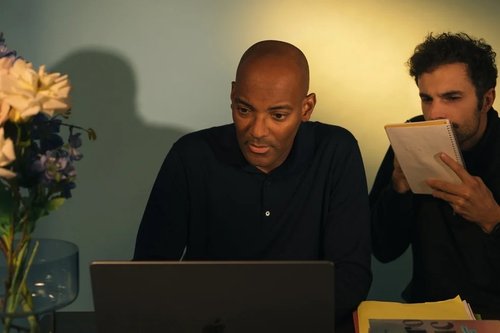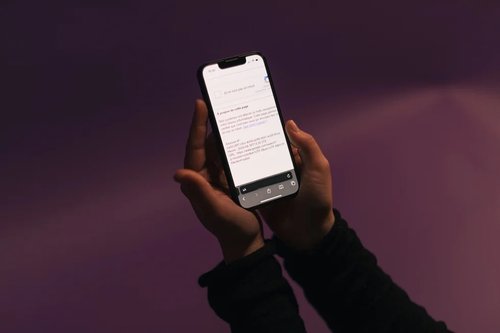Niksen: what if you took the time to do…nothing at work?
12. 1. 2022
6 min.


journaliste freelance
Contrary to what you might think, the idea behind this article is not to give you (yet another?) reason not to do anything at work, but rather to talk about a concept from the Netherlands that is not well known outside that country. It’s called Niksen and the idea is to break up the working day with little pauses during which you do nothing at all, not even twiddling with your smartphone or chatting with colleagues. These occasional bouts of downtime are not only sources of well-being, but can also help you to be more productive, according to followers of Niksen.
Doing nothing and working according to your biological rhythm
Journalist Gebke Verhoeven popularized the then-new concept that defends the practice of doing nothing at work in a column entitled “Niksen, the mindfulness of today” published in 2017, in the Dutch magazine Gezond Nu (Healthy Now). Later, Olga Mecking wrote an article praising the concept in The New York Times. After the success of her article, which was shared and retweeted more than 150,000 times, the journalist decided to write a book on this wellness concept that urges people to do nothing at all. So how does it work? In practical terms, for Carolien Hamming, a trainer at CSR Centrum, a Dutch organization dedicated to fighting against stress and burnout, it’s a matter of ”doing something without having a goal – for example, looking out the window, taking a walk, or listening to music.”* Mecking points to its benefits, such as better decision-making and having a clearer mind. In her work as a journalist and translator, her best ideas come when she feels the need to take a break, she says.
On top of doing nothing, Niksen – a contraction of the Dutch words niks (meaning “nothing”) and doen (“doing”) – urges people individually to listen more closely to their natural rhythm. In a professional environment, this means organizing your day according to your chronotype (each person’s own circadian rhythm). If you know you’re not a morning person, you can save the less-involved tasks, such as answering emails, tidying your desk, and organizing data, for the early part of the day. Then you can do the tasks that require more thought in the afternoon. You can take the opposite approach if you’re a morning person. What’s the point of doing it this way? Firstly, it saves time and is more efficient. Secondly, the more idle moments should allow you to fit in some Niksen to better make the most of these breaks. Above all, this concept pushes you to be more attentive to your body’s signals, from a simple yawn to chronic pain, which tend to go unheeded in the workplace.
A break for your brain
Have you ever analyzed just what you do at the office during your breaks? Everyone tends to “do” something: have a coffee, speak with colleagues, or even have a cigarette. Just to see what happens, try to do nothing for five minutes: look out the window if you’ve got a nice view, or go out and get some fresh air just outside the front door and see what happens. Worst case? Nothing at all will happen and you’ll have given your brain some rest. Best case? You’ll get the idea of the century and the next big project will be yours. “The American neurologist Marcus Raichle discovered the virtues of the default brain mode that only works when you’re not doing anything,” says Mecking. “He compared the medical images of two test groups: one was perpetually busy and the second did nothing. For the first group, the brain activity decreased, while for the second, it did not. This can be explained by the fact that creativity improves, as does the ability to solve problems, after doing nothing at all.” After all, it’s said that sometimes if you have a problem, it’s good to sleep on it.
During the first lockdown, Cecile Jarleton, a doctoral student of occupational psychology and educator at Unow, a distance learning company, was having bouts of insomnia. To try to get some sleep, she started a new ritual. “I forced myself to do absolutely nothing for 30 minutes every day. I would go to a church, because it was the only quiet place still open at the time. During this time, my mind was making the connections that it couldn’t make on a daily basis, as if it was integrating and analyzing information,” she says. She now has no trouble sleeping, and she feels calmer and more efficient, which she attributes to Niksen and tuning in to her circadian rhythms. “I also feel a lot less guilty when I can’t move forward on a project,” she says. “It makes me more available for other people, I’m more easily available to listen when it’s needed. It’s as if I have given myself some space to be free to be more present in everything I have to do.”
A physical break
In her book, Mecking recommends you identify those moments when your mind switches to standby mode or performs any task mechanically. These short moments are when Niken is easily accessible: so take a break and do nothing. Jarleton says: “Even if with Niksen you’re not actually doing ‘nothing’ at all, you’re leaving time for your saturated mind to wander.”
Now that working remotely has become common, it’s not always easy to take a proper break at home and you may find yourself doing housework during your working hours. “You may not have any coworkers but there’s laundry to fold or dishes to do,” Mecking says. “So when I work at home, I force myself to do nothing at all for even just five minutes by sitting on a bench or looking out the window.” If you’re the restless type and doing nothing seems impossible to you, try doing some “heart coherence” breathing. This is a form of breathing that involves taking long slow breaths at a rate of about five or six per minute. Breathe in deeply for five seconds, hold it for five seconds, then out for five seconds. Nathalie Renard, a professional coach and founder of a coaching and branding firm, recommends taking three five-minute pauses to break up your working day. “Holding in six breaths per minute is about the time it takes for your heart to calm down. This allows you to take stock while also taking care of yourself physically,” she says.
Reconciling this with work culture
Merryl Marcout, a freelance press agent, has learned to take breaks. “When I was working for a company, I would sometimes get so tired that I couldn’t work anymore. I wasn’t comfortable isolating myself in a room, as people might have thought I was a slacker,” she says. “Now I work alone at home, so I listen more to my own body. If I’m not feeling productive by 4PM, I stop working instead of doing poor work, even if it means starting up again later.” In many companies, it’s frowned upon to be seen to be doing nothing, even for a short time. Mecking blames our current work culture. “There is a lot of presenteeism within work culture,” she says.
Renard points out that even Steve Jobs would allow himself to go for walks to get his head in the game. But what do you do if during one of your quiet little breaks, your manager comes over to you as they are wondering why you aren’t doing anything. The coach recommends starting a discussion with them. “The clearer you are with yourself and with others, the less this weight of needing to be busy will affect you. On the contrary, it will reinforce a certain feeling of self-confidence. So don’t hesitate to explain to them that you need these short breaks to be more effective for the rest of the day. Hopefully, they won’t judge you for it,” says Renard. Mecking goes even further: “Niksen is an important skill that allows you to regroup, find your inner calm and avoid burn-out.”
A call to resist: do nothing, together!
In recent years, the quality of working life has become an important issue for both HR managers and employees. “We are in the midst of a change. Today, it is no longer possible to mistreat peoples’ bodies and minds,” says Renard. “Rightly so, by the way.” On the other hand, employees are starting to listen to themselves and to take into account the signals from their own bodies. If you are to resist the urge to do too much, “you have to own up to subscribing to this concept, even if it goes against standard behavior at your company. Don’t hesitate to encourage your coworkers to join you in creating an even more peaceful environment,” says Mecking. Tony Crabbe, an occupational psychologist and author of the French self-help book Plus Jamais Débordé (Don’t ever be Overwhelmed Again), suggests surrounding yourself with Niksen-adept employees to better resist giving in to the urge to be overactive. “It contributes to group cohesion when you take those calm breaks together,” says the coach. In an ideal world, Mecking would love company leaders to set an example and lead the way.
You get it now, Niksen has everything you could need. Yes, it’s yet another one of the endless concepts of wellness, but at least it’s got the advantage of not adding anything to your to do list. Quite the opposite, as it allows you to do nothing (temporarily, of course) to get the best out of yourself: good ideas and a sharp, focused mind. It’s hard to put a price on that.
Photo: Welcome to the Jungle
Translated by Kalin Linsberg
Follow Welcome to the Jungle on Facebook on LinkedIn and on Instagram and subscribe to our newsletter to get our latest articles every day!

Viac inšpirácie: Produktivita

Goal setting: How to bounce back when you feel like a failure
The big F word ... Failure. We all face it, but here’s how to make it your secret weapon for success.
18. 12. 2024

Productivity boost: Why mental health outshines long hours
Long hours don’t equal better work. Discover how mental health support can unlock productivity and time efficiency in the workplace.
28. 11. 2024

10 fun ways people are using AI at work
While many use AI for basic tasks like grammar checks or voice assistants, others are finding innovative ways to spice up their work days.
05. 11. 2024

12 Slack habits that drive us crazy
Slack is a top messaging platform, but coworkers can misuse it. Over-tagging and endless messages can make it frustrating ...
16. 10. 2024

10 CareerTok creators you should be following
Looking for career advice? CareerTok has quick tips from real experts on interviews and job offers.
25. 9. 2024
Novinky, ktoré to vyriešia
Chcete držať krok s najnovšími článkami? Dvakrát týždenne môžete do svojej poštovej schránky dostávať zaujímavé príbehy, ponuky na práce a ďalšie tipy.

Hľadáte svoju ďalšiu pracovnú príležitosť?
Viac ako 200 000 kandidátov našlo prácu s Welcome to the Jungle
Preskúmať pracovné miesta